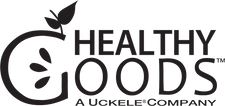I waited six months to feed my infant son his first bite of “real” food. I was so excited, but that quickly deflated when he refused everything! He tried the food, but swallowed very little because he pushed it all back out with his tongue. Even up to 7 months old he would turn his head away from the spoon, pierce his lips closed, and push the little bit of food I was able to sneak into his mouth, out with his tongue. I was beyond frustrated.
It’s as if someone knew I needed help because I stumbled upon a fellow RDs Facebook post that described something called “baby-led weaning,” aka: BLW. I had never heard of it, but was very curious. It ended up saving me, and my son loved it!
What is Baby-Led Weaning?
Baby-led means you allow and encourage your baby to self-feed solid finger foods instead of receiving purees via spoon, so baby’s able to eat a variety of textures. Mom continues to breastfeed/formula feed while baby experiments with finger food.
Background about Baby Food
Did you know baby foods were created because doctors used to recommend feeding babies WAY earlier than we do now? Even 3-6 weeks of age in some cases! The texture had to be pureed if you’re feeding them that young.
If we wait until baby is biologically ready to self-feed, around 6 months of age in most cases, he’s able to eat a variety of textures and spoon feeding purees actually isn't necessary like it is if you offer solids much earlier.
When Is Baby Ready?
The American Academy of Pediatrics and American Academy of Allergy, Asthma, and Immunology recommend delaying solids until about 6 months old. At this age, baby starts to demonstrate signs of readiness for solid food, and the gut wall begins to close, making baby less prone to allergies and easier digestion.
Signs of readiness include:
--Baby sits up relatively unassisted.
--Baby reaches for food and puts it in his mouth.
--Baby's tongue doesn't thrust outward.
--At this time same, the closure of the gut wall happens all around the same time (6 months). Their bodies are pretty smart.
My son showed all the developmental signs of readiness for solids, but wouldn’t let me feed him. He really just wanted to be in charge.
Baby-Led Weaning vs. Purees
The choice is up to you when it comes to feeding your baby purees or not. I have two concerns about how many parents utilize purees:
1. It is very easy to overfeed with purees. In BLW the quantity of food that enters the GI tract gradually increases as they become better at self-feeding. With spoon feeding, it's possible to get a lot in the baby's mouth before they can tell us they're full. This means they can get too much food too quickly, leading to digestive issues and an inability to understand and regulate how much food they need. Research suggests self-feeding babies have a better understanding of their hunger and fullness cues, which help with weight regulation as an adult. They're also more likely to choose healthy foods because they aren't given to them.
2. When kids do not transition relatively soon to lumpy (more chewable) food, their risk of feeding issues and pickiness as they get older increases. Check out this interesting study about the importance of moving onto lumpy food before 9 months.
Calories
Some parents become concerned their baby isn’t "eating enough" when self-feeding starts because it doesn't seem like they’re getting as much quantity compared to when spoon fed. In reality, purees actually don't have many calories because they're mixed with water, so babies can get the same amount of energy density in what seems like less food. There have actually been studies to confirm this. Just look at a packet of pureed veggies and see how few calories there really are. Like everything BLW, it takes time for baby to learn.
Getting Started with Baby-Led Weaning
If you initiate BLW at 6 months old, your baby probably uses a palmar grasp (the fingers squeeze against the palm to hold an object). Hence, BLW advocates longer soft strips or foods baby can grab onto with this type of grasp, such as sweet potato fries, steamed broccoli, chicken drumstick, cheese sticks, banana, avocado, noodles, strips of buttery toast, etc.
Pincer grasp begins happening around the same time as a palmar grasp, but a more advanced pincer grasp happens usually between 10-12 months old. To improve your baby's pincer grasp development, it's OK to offer smooshed foods, such as smashed green peas or smashed blueberries.
Give your little one the food in a suitably-sized piece and if they like it, they will eat it. It usually takes a couple weeks for baby to get the hang of it, as they don’t know right away they need to chew (with gums) before swallowing. But they'll start "chewing", with or without teeth, and it's so cute! The newest recommendations on infant feeding recommend introducing a variety of textures from the start.
Once BLW was introduced to my son, I could tell he loved it even though he didn't get a lot of food in his mouth. However, by the time he was 8-8.5 months old, he was shoveling in the food without any troubles! He didn't have many teeth, but could eat most everything the family ate. He would "chew" as if he had teeth, haha! It was cute.
That’s the essence of Baby-Led Weaning. No purees, no ice cube trays, no food processor, no potato masher, no baby rice, no weird fruit and veg combos… just you and your child, eating food you enjoy with you and your family.
Did or do you practice baby-led weaning? I would love to hear about it!
In Health and Happiness,
Kelly Harrington, MS, RDN
Registered Dietitian Nutritionist for Healthy Goods

